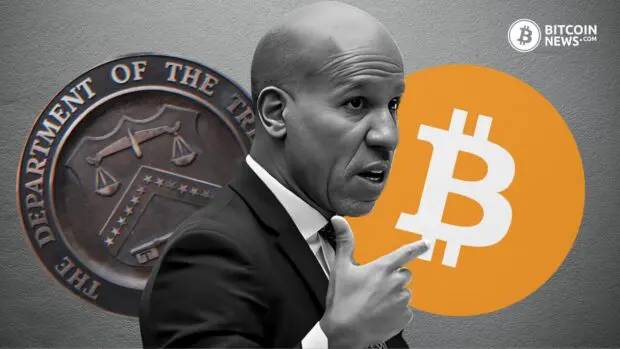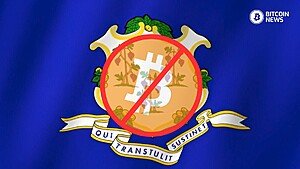In a recent series of testimonies before the House Financial Services Committee, the U.S. Treasury’s Undersecretary for Terrorism and Financial Intelligence, Brian Nelson, provided critical insights into the role of digital assets in funding terrorist activities. His testimonies aimed to clarify misconceptions surrounding the use of digital currencies by militant groups like Hamas and Palestinian Islamic Jihad.
Contradictory Reports Surface
Initial reports, notably by The Wall Street Journal, suggested significant digital assets usage by these groups, citing figures in the tens of millions of dollars. However, Nelson debunked these claims, asserting that digital currencies played only a minor role in their financing.
Nelson’s testimony to a House panel suggests that the U.S. Treasury now believes the actual amount of digital assets funding Hamas is significantly less than what was initially reported by the Wall Street Journal. Nelson emphasizes the need for improved data and analysis to better inform policy decisions.
Nelson stated:
“The numbers noted in The Wall Street Journal piece talked about wallets but not necessarily the disaggregated [amount] among the wallets customers.”
Brian Nelson’s Testimonies Unveil Truth
Nelson emphasized that digital assets accounted for only a small fraction of the funding for Hamas and Palestinian Islamic Jihad. He highlighted the preference of terrorist organizations for traditional financial mechanisms over the complexities of digital currencies. This assertion contradicted earlier narratives fueled by media reports.
During questioning, Republican Congressman Tom Emmer asked:
“On October 10th, 2023, the Wall Street Journal reported that between August 2021 and June 2023, Hamas received $41 million in digital assets and the Palestinian Islamic Jihad received $93 million in digital assets.
Undersecretary Nelson, is this Treasuries’ assessment too, because world’s leading Blockchain analytics firms have called this a misinterpretation of the data, and that the amount that any terrorist might have received is significantly smaller? […] It’s assets that people had in their wallets, as opposed to what was specifically going to Palestinian Islamic Jihad and Hamas?”
To which Nelson replied:
“Yes, I think that assessment largely tracks with the number noted in the Wall Street Journal piece talked about wallets […] That’s what we think is most likely, and that’s our assessment,”
He added that he believes that terrorists still prefer to use “traditional products and services.”
Misrepresentations Clarified
The confusion stemmed from a misinterpretation of data, where the reported amounts failed to accurately represent funds specifically directed to these groups. Nelson underscored the importance of disaggregating money flows to provide a clearer understanding of the situation. Treasury sanctions businesses and regional financial firms, alleging they aid undesired activities.
When questioned about the exact funds allocated to terrorist groups, Nelson stated he could provide those numbers in a classified conversation, stating:
“We don’t expect the number is very high […] I think we can have a classified conversation about precise numbers or expectations. I think we have done […] a good job in identifying the virtual asset service providers that they have relied on and the financial facilitators that they have historically relied on that would tend to use virtual assets.”
Congressional Reaction
Nelson’s testimonies prompted reactions from lawmakers, with some calling for public clarification to prevent misinformed legislation. Concerns were raised about the potential impact on financial innovation in the U.S. if legislation were based on inaccurate information.
Emmer persisted in questioning Nelson, emphasizing the Treasury’s duty to correct the record publicly. He warned against legislative decisions influenced by misinformation.
Emmer said:
“Senators are writing legislation based on the Wall Street Journal’s inaccurate reporting. Since Treasury has accurate data, it has an obligation to correct the record on the size of Hamas’s digital asset fundraising efforts […] we have senators who are legislating on these false figures […] certain Senators are trying to base legislation on [the WSJ false numbers] that would literally destroy innovation in this country.”
The Underworld of Terrorism and Trafficking
Digital assets’ role in terror financing remains minimal, with reports indicating that their use in facilitating criminal activities continue to diminish. A report from Chainalysis indicates that digital assets contributed to 0.34% of all illicit transactions worldwide. This figure is significantly lower than the 1.29% reported in 2019.
Nelson added:
“While we continue to assess that terrorists’ use of digital assets remains a small fraction of more established mechanisms to move money, we recognize that terrorist groups have and may continue to turn to digital assets to raise, transfer, and store their illicit proceeds.”
Legal Actions Against Digital Asset Exchanges
Recent legal actions against digital asset exchanges, such as Binance, highlight concerns about their role in facilitating illicit financial activities. Lawsuits allege insufficient measures against money laundering and raise questions about the extent of regulatory oversight in the digital asset industry.
Nelson reiterated the Treasury’s commitment to combatting the misuse of digital assets by terrorists. He emphasized the need for additional tools and resources to disrupt financial networks supporting terrorism, indicating a proactive approach to address emerging threats.
Conclusion
Nelson initially highlighted the importance of disrupting extremist groups’ use of digital assets. However, in response to Emmer’s inquiries, he emphasized the government’s focus on disrupting these groups’ ability to leverage digital assets and the need for additional tools and resources to address illicit finance in virtual asset markets and forums.
The testimonies provided by Brian Nelson shed light on the complex relationship between digital assets and terror financing. While initial reports may have exaggerated the extent of usage by militant groups, the reality suggests a more nuanced picture. As debates continue, policymakers must seek accurate information to form effective regulation without stifling innovation in the digital asset industry.










